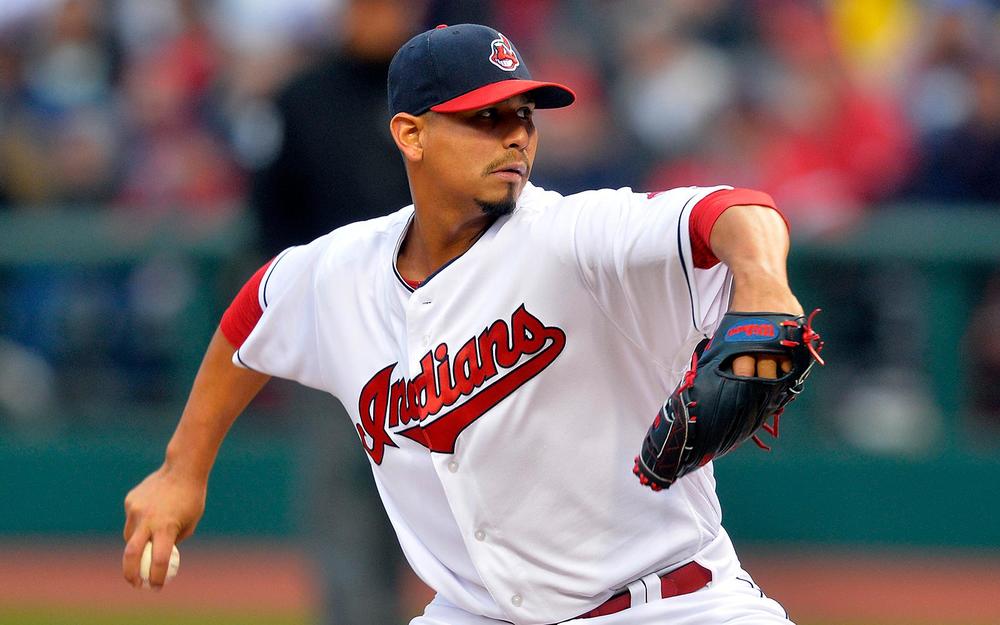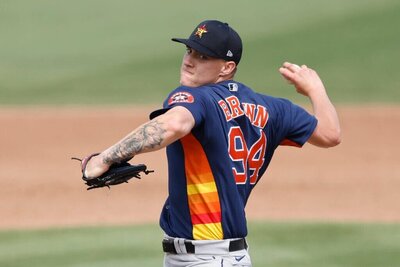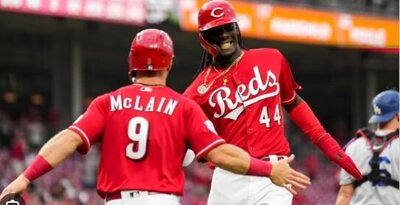Michael Pineda - Pineda allowed a hit and a walk across a clean four innings against the Indians on Sunday. Is 2019 the year the Pineda finally pitches well again? Tommy John surgery and a knee injury have kept Pineda off the field since 2017, but the 30-year-old still boasts some of the best pure stuff in the league with excellent command and appears to have been able to maintain his velocity despite his recent injury history. Pineda has always done a good job of getting hitters to chase pitches (34.3% o-swing rate) and whiff (12.5% swinging strike rate, 74.8% contact rate), leading to career 24.4% and 5.6% strikeout and walk rates (respectively), but he's struggled with a variety of batted ball related issues over the course of his career. Despite the fact that Pineda has never been hit particularly hard over the course of a season (career 28.7% hard hit rate, high of 32.7% in 2016), the pitcher has posted some combination of an exceptionally high BABIP, extra base hit rate, and HR/FB ratio in each of his last three seasons -- numbers that never really lined up with his peripheral statistics. As a result, Pineda owns a 0.029 wOBA-xwOBA for his career -- the league average wOBA-xwOBA was .004 last season, and Pineda's career .299 xwOBA is better than the league average by almost 15 points. Blaming significant portions of Pineda's past three seasons (spanning over 432 innings) on bad luck (and potentially bad defense) seems unreasonable, but that's what his underlying numbers seem to suggest. The arsenal and command that made Pineda an All-Star in his rookie year is still here, so expect Pineda to be a valuable fantasy contributor this season.
Matt Chapman - Chapman went 2-3 with an RBI and a walk against the Angels on Sunday. In his first full major league season in 2018, Chapman was one of the league's best third baseman whose offense nearly caught up to his Gold Glove caliber defense. The ability to hit for power was never in question for Chapman, and his impressive power was on full display last year with his 93.1 MPH average exit velocity and (Statcast) 47.6% hard hit rate. Scouting reports always flagged Chapman's hit tool though, and Chapman's ability to make consistent contact was a concern as he rose through the minor leagues. In his first major league stint (84 games in 2017)m that concern appeared to be validated as Chapman posted a 28.2% strikeout rate, 73.2% contact rate, and 11.5% swinging strike rate. When he came back for the 2018 season though, Chapman's contact skills were significantly improved as his contact rate rose to 78.7% and his strikeout rate fell to 23.7%. Also of note is that Chapman's already solid plate discipline skills improved as his z-swing rate increased by 2% and his o-swing rate decreased by 2%. If Chapman continues to become more aggressive with pitches inside of the strike zone while laying off of pitches outside of the strike zone more frequently and improving his hit tool, then he could push himself to the upper tier of MVP voting this season.
Dylan Bundy - Bundy lasted just 3.2 innings against the Yankees on Sunday and allowed three runs on seven walks and a pair of hits, though he struck out seven batters. Despite throwing more innings than he ever had season, Bundy posted a career worst 5.45 ERA with a 5.17 FIP. Bundy's main problem last season was allowing too much bad contact as he posted an 8.5% barrel rate (6.1% is league average) and a 37.4% hard hit rate -- dangerous numbers for a fly ball heavy pitcher. As a result, Bundy allowed a ridiculous 5.5% home run rate that fueled his high ERA. Encouragingly, Bundy added a sinker to his arsenal last season that generated a high rate of ground balls (relative to the rest of his arsenal), and he should feature that pitch more frequently this season. Although Bundy would likely be better off as a reliever so he can focus on throwing only his sinker and slider (in addition to his fastball), the Orioles' embarrassingly thin pitching rotation will likely keep Bundy in a starting role for the year. Bundy does have a chance at getting his ERA back down to respectable levels this season with adjustments in his pitch mix, but don't expect him to be a valuable fantasy contributor.
Jake Bauers - Bauers got his first hit of the season and scored a run against the Twins on Sunday. Bauers' .201/.316/.384 slash line from 96 major league games last season may not inspire much confidence from fantasy owners, but the 23-year-old pairs strong plate discipline skills with solid power and moved to a park that should fit his plate approach well over the offseason. Bauers particularly struggled from mid-August to mid-September, when his ground ball rate rose dramatically as his contact rate dropped. Some (if not most) of the drop in contact rate is likely related to an adjustment by opposing pitchers -- pitchers started attacking Bauers with breaking balls (his worst pitch by whiff rate) more frequently in September, causing Bauers to swing and miss more often. The change in pitch mix doesn't tell the full story though -- Bauers' slump was more related to a decrease in contact quality represented by a spike in ground ball rate and IF/FB ratio (although his hard hit rate remained high). As a result, Bauers' BABIP was the driver of his decreased level of play. Interestingly, Bauers hit more ground balls against offspeed pitches than breaking pitches last season, but the types of pitches that he saw during his slump followed the opposite trend. There's a lot to like from Bauers entering this season, so monitor his batted ball quality over the season and be ready to grab him when he starts heating up.
Carlos Carrasco - The Twins rocked Carrasco for six runs and ten hits over just 4.1 innings on Sunday, striking out four times and walking once. Carrasco has been one of the league's most consistent fantasy pitchers over the past few seasons, and 2019 should be another strong year from the 32-year-old. One thing to monitor with Carrasco is his pitch mix -- Carrasco's fastball has been losing velocity every season since 2014, and in response Carrasco mostly increased his slider usage at the expense of his fastball. In Spring Training though, Carrasco started relying significantly more on his sinker. Although Carrasco rarely used his sinker before this year, it's pretty much the same pitch it's always been in terms of movement and velocity but was effective in Spring Training (albeit in a small sample size). Part of the sinker's success could be deception (Carrasco's release point is almost identical for his sinker and fastball), but it'll be hard to tell how good the pitch actually is until we get a larger sample. Expect Carrasco to pitch well this season, but keep an eye on how he adjusts his pitch mix over the season.
This is just a small sample our daily analysis, join our member area for over 80 daily player updates sent to your inbox every morning and track your team online. Click here for details: https://www.insiderbaseball.com/baseballsample.htm Click here to register: http://www.fantistics.com/salesbaseball.php3



































